A handy FAQ about meteorites, meteors and other small celestial bodies that Earth encounters in its travels around the Sun.
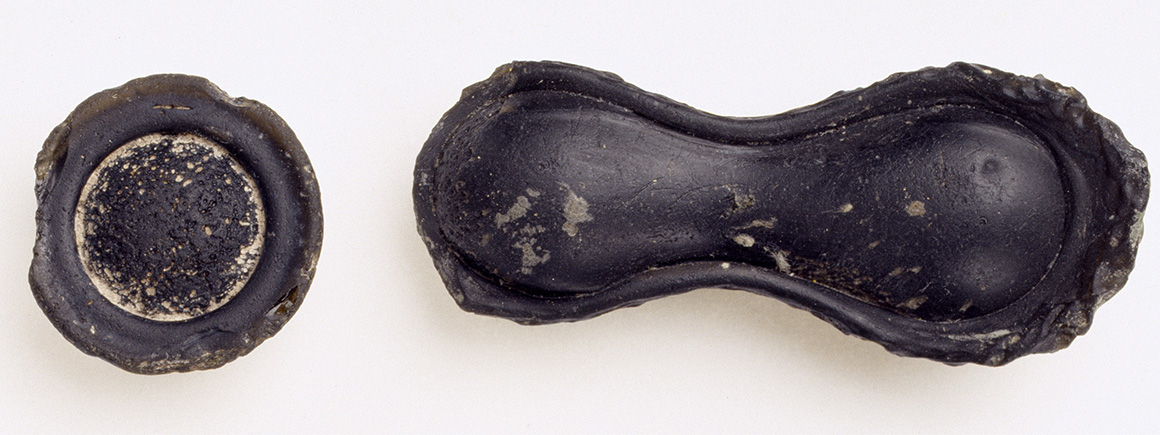
What is a meteor, in relation to a meteorite or meteoroid?
Most meteors you see in the form of shooting stars (meteor showers) are dust-sized particles that burn up as they pass through Earth's atmosphere. Sometimes larger meteors don't completely burn up in the atmosphere - instead they fall to Earth's surface. When these extraterrestrial objects are recovered from Earth's surface, they are known as meteorites.
Most meteorites are bits of asteroids from the asteroid belt between Mars and Jupiter, although some are bits of comets or, very rarely, pieces of the Moon or Mars.
A meteoroid is a small body in our solar system that would only become a meteor were it to encounter Earth's atmosphere. A meteor doesn't technically become a meteorite unless it survives the journey to the ground.
What is the difference between a comet and an asteroid?
The main difference between comets and asteroids is what they are made of. Asteroids are made up of metals and rock, while comets are composed of dust, rocky material and ice. They both orbit the Sun and were created during the formation of our solar system 4.5 billion years ago.
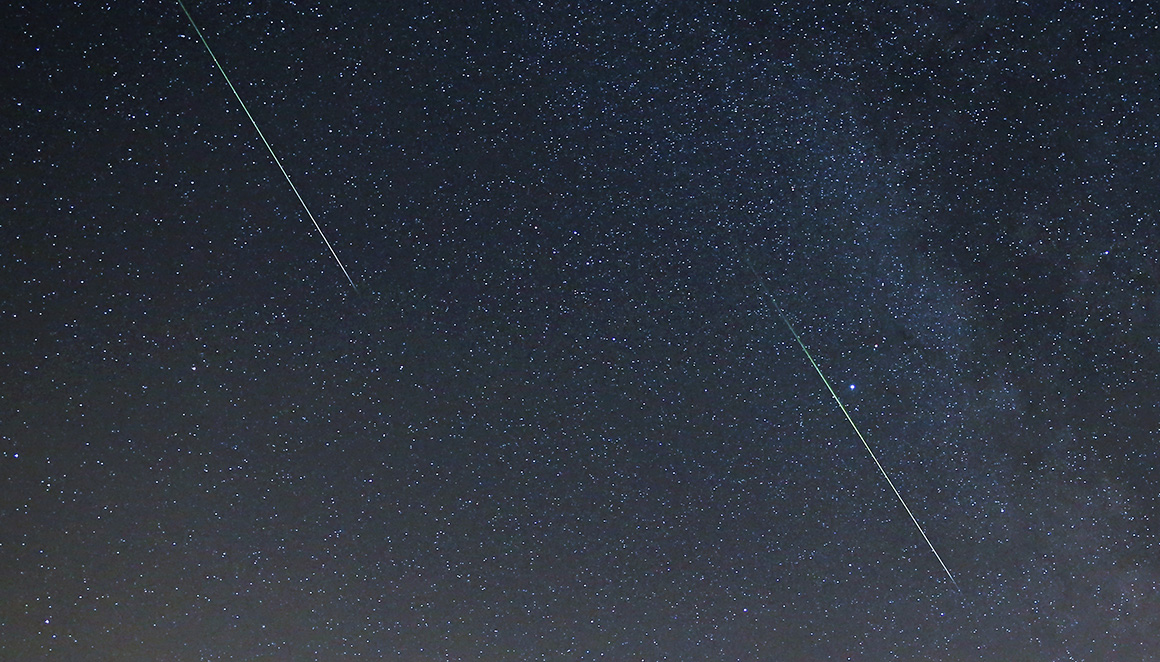
What is a meteor shower?
Meteor showers occur when Earth passes through the dust trail left behind by comets as they pass close to the Sun. The result can be spectacular displays of as many as hundreds of meteorites flashing across the sky like natural fireworks. Get tips on how to watch the next meteor shower.
Where do meteorites come from?
Most meteorites are fragments that have broken away when two asteroids collide. A small proportion of meteorites also come from the Moon and Mars.
Scientists can tell if meteorites are from the Moon as their composition is very similar to samples brought back from the Apollo lunar mission. Martian meteorites can be identified due to their similarities to Mars’s atmospheric composition, which was detected by the Viking probe.
How old are meteorites?
Meteorites from asteroids are around 4.5 billion years old. Meteorites from the Moon are older than 2.5 billion years, and meteorites from Mars may be as young as 165 million years.
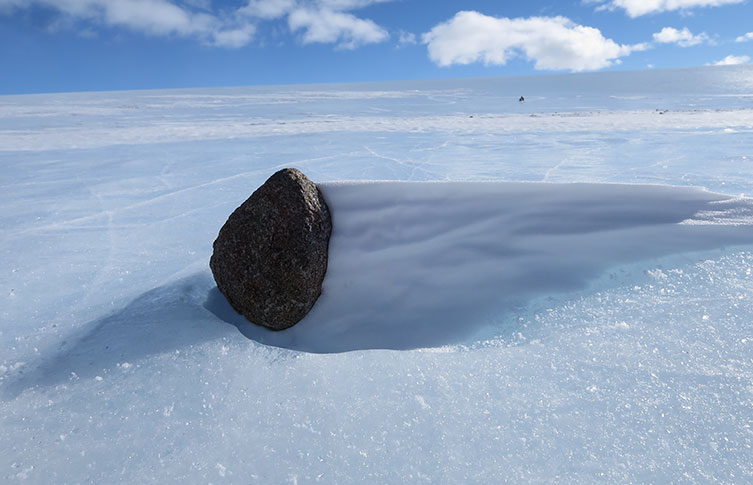
A meteorite found in Antarctica. Image: Nancy Lanza (CC BY-NC 2.0) via NASA Johnson Flickr.
Where do scientists find meteorites?
Although few meteorites are observed hitting the ground - most fall into the sea - thousands of meteorites are collected each year. They can be found all over the world but are easiest to spot in dry places, such as the desert in Australia or Antarctica, where they do not erode quickly and are less likely to be hidden by vegetation.
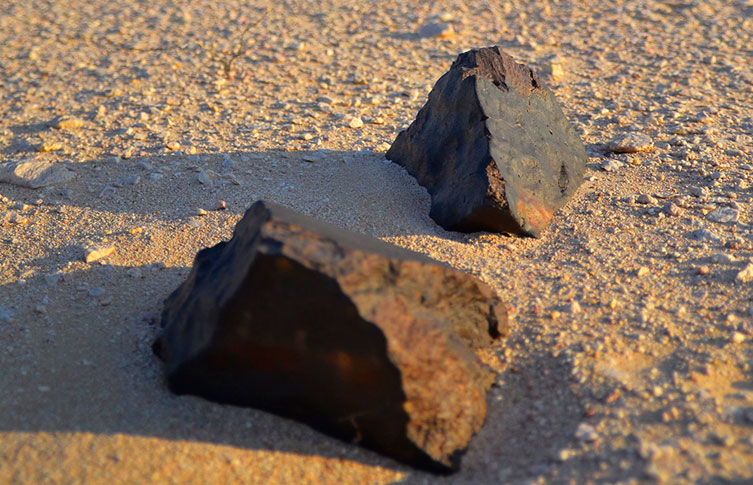
A meteorite found in the desert. Image: Marek Woźniak (CC BY-SA 3.0) via Wikimedia Commons.
Are meteorites radioactive?
No. Meteorites do contain radioactive elements, but not significantly more than any ordinary terrestrial rock.
Have scientists found alien bacteria in meteorites?
No evidence of extraterrestrial organisms has been found in meteorites.
Did a meteorite (or asteroid) kill the dinosaurs?
The impact of a comet or asteroid 66 million years ago is thought to have contributed to the extinction of around three quarters of all species living on Earth at the time, including many dinosaurs.
Are we also at risk from the impact of asteroids and comets?
Yes. Asteroid and comet collisions with the Earth are a natural hazard. The risk is, however, relatively small. More information is available from the Spaceguard Centre and NASA's Near Earth Object Program.
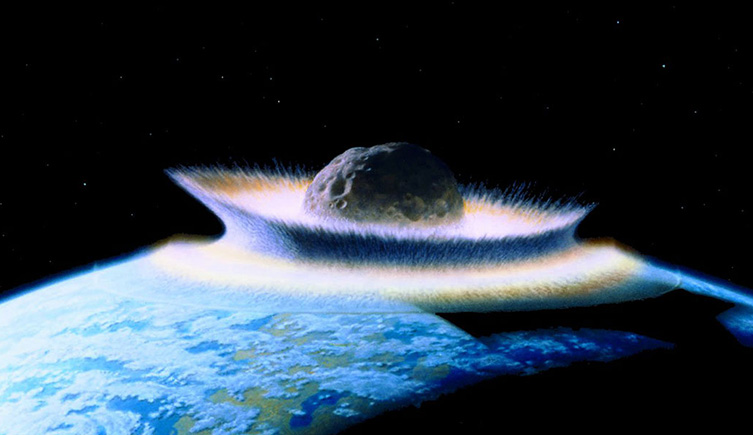
An artist's impression of what an asteroid colliding with Earth might look like. Image: Don Davis via NASA Image and Video Library
Has anyone been killed by a meteorite?
There have been no recorded deaths due to a meteorite fall. The chances of witnessing a meteorite fall, let alone being hit by one, are very, very small.
What was the largest meteorite to ever hit Earth?
The largest impact crater on Earth is in South Africa, called the Vredefort Dome. It is very ancient and poorly preserved, and measures roughly 300 kilometres across. The impact from the meteor would have been enormous.
How often do major meteorite impact events occur?
Scientists predict that a meteorite around 30-50 metres across, capable of forming a kilometre-wide crater, will occur around every 1,000 years. However, the last impact of this size that we know of took place 55,000 years ago.
Would we have warning of a large meteorite impact? Are we prepared?
The chances are that a large meteorite will hit Earth again eventually, as there is a lot of asteroid activity in our solar system. Global observation networks are keeping constant vigil, so there should be plenty of warning about potential impacts. Scientists have proposed plenty of strategies to deflect or destroy Earth-bound asteroids, though these depend on the size of the asteroid.

Explore space
Discover more about the natural world beyond Earth's stratosphere.
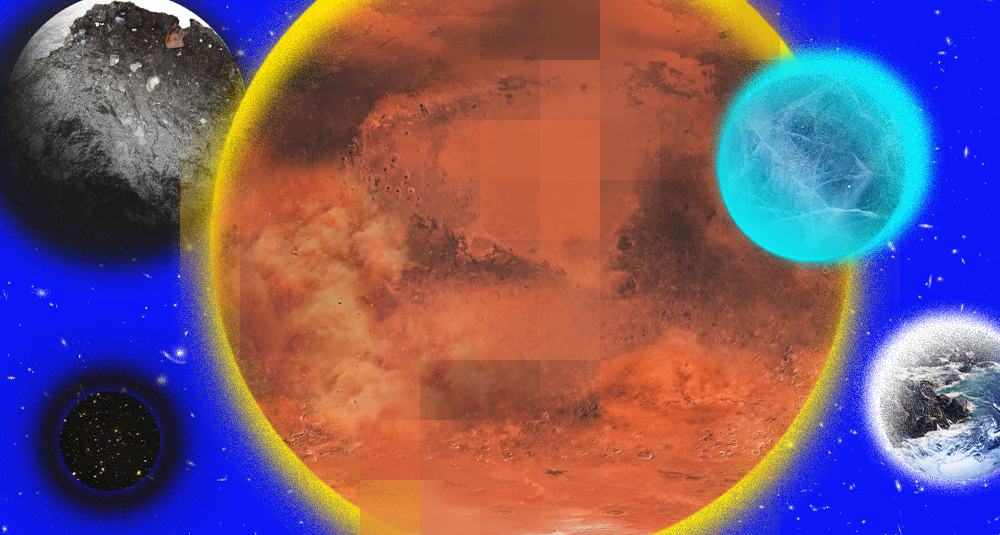
Space: Could Life Exist Beyond Earth?
Find out in our latest exhibition! Snap a selfie with a piece of Mars, touch a fragment of the Moon and lay your hands on a meteorite older than our planet.
Open now


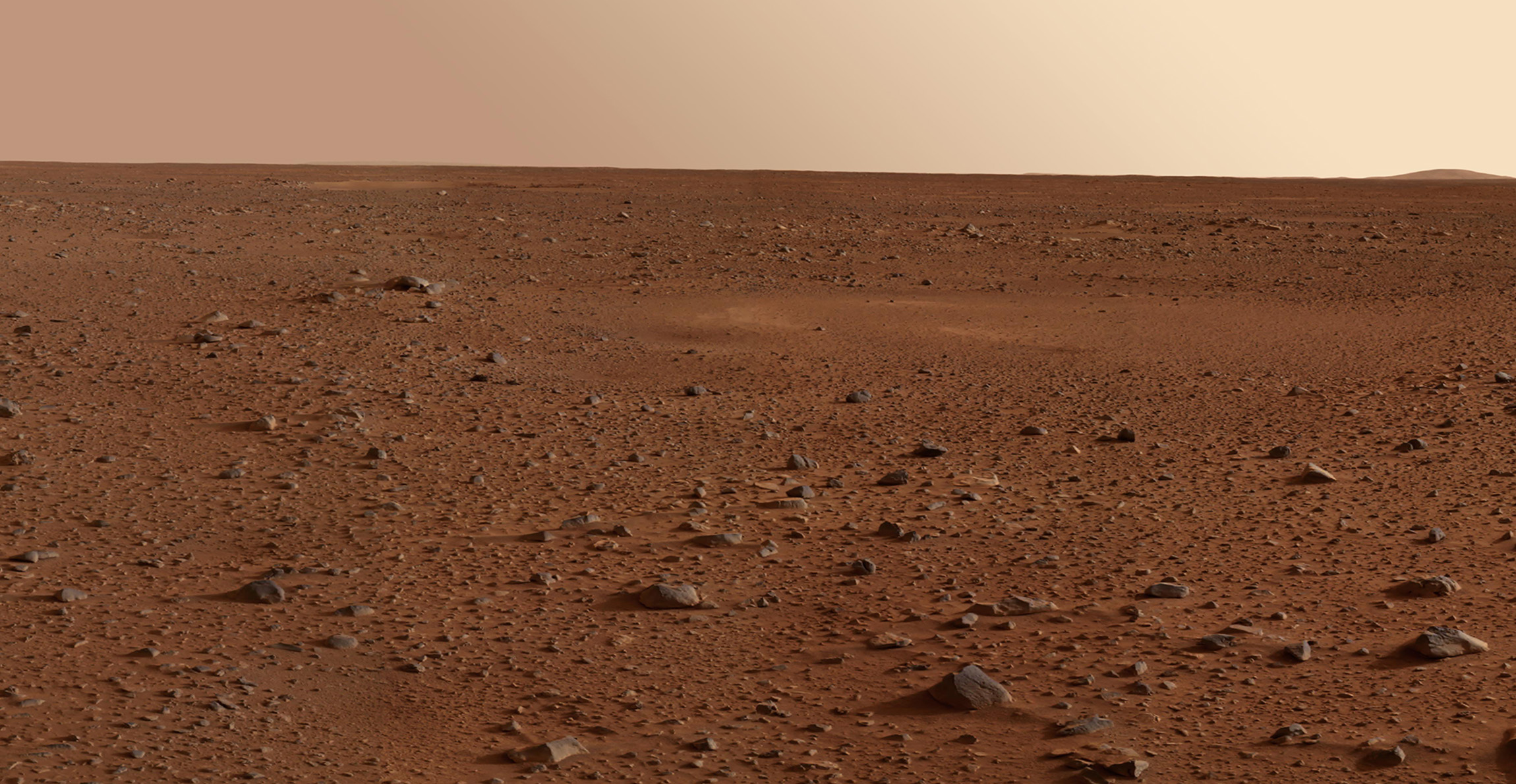

Don't miss a thing
Receive email updates about our news, science, exhibitions, events, products, services and fundraising activities. We may occasionally include third-party content from our corporate partners and other museums. We will not share your personal details with these third parties. You must be over the age of 13. Privacy notice.
Follow us on social media